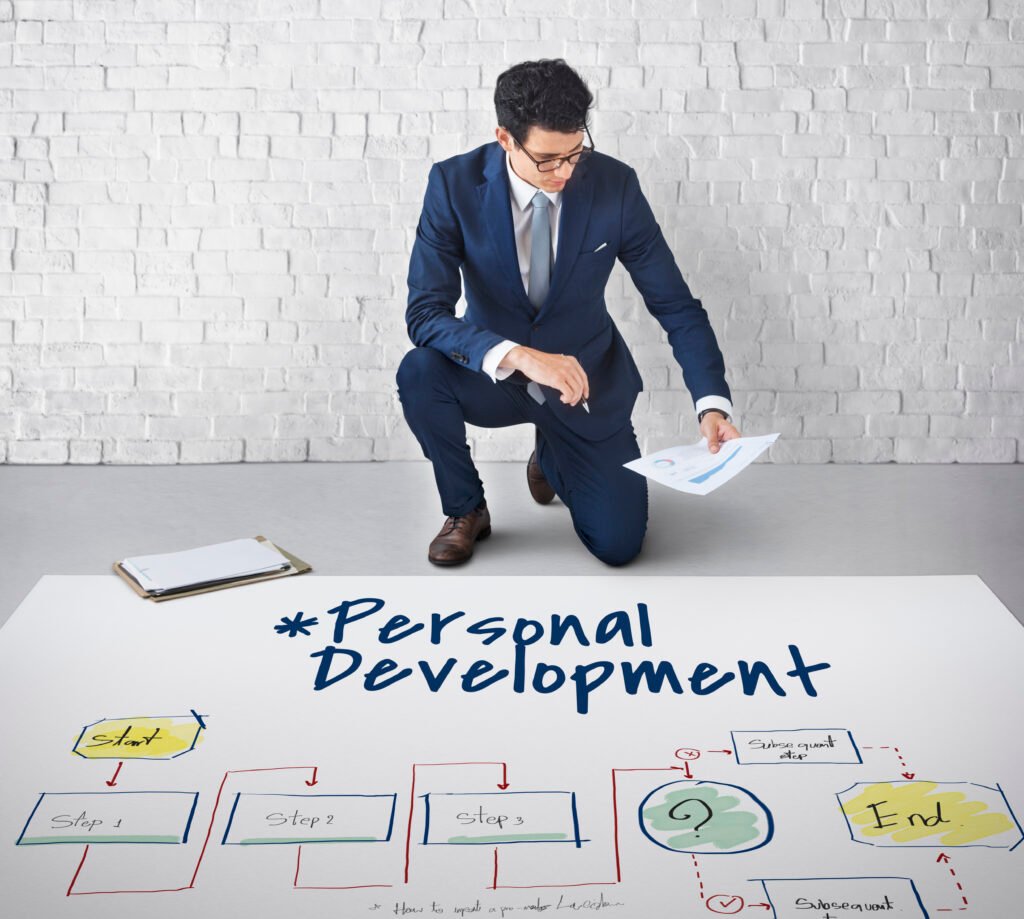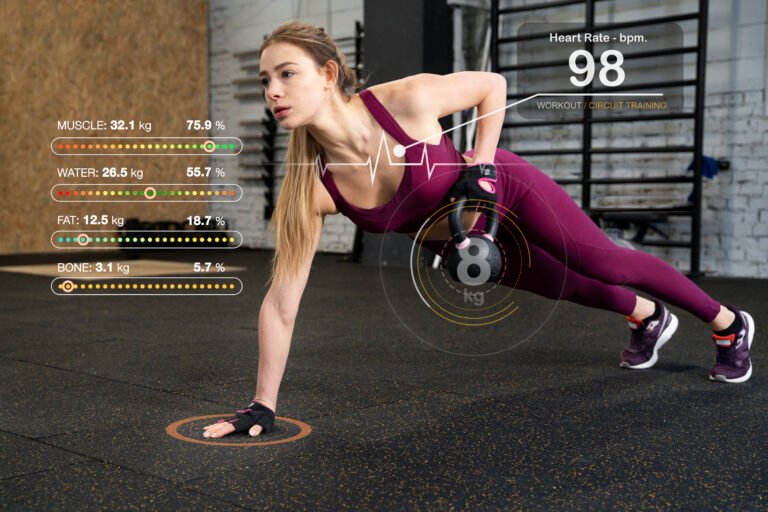1) What is a Skill Roadmap Generator?
A Skill Roadmap Generator is a repeatable process (manual or semi-automated) that takes three inputs—goal, baseline, and timeframe—and produces a prioritized learning plan. The output is a roadmap containing sub-skills, micro-projects, learning resources, a timeline, and measurable success criteria. Think of it as the project plan for your professional learning.

Key features:
- Skill decomposition (what exactly to learn)
- Prioritization (what to learn first)
- Action plan (projects + hours)
- Measurement (KPIs, checkpoints)
- Iteration (retrospective and adjustment)
Table of Contents
2) Why use a Skill Roadmap Generator (benefits)
- Stops analysis paralysis. Instead of a fuzzy “learn more”, you get concrete tasks and deadlines.
- Maximizes ROI. Prioritizes sub-skills that deliver the most career value.
- Shortens time to impact. Micro-projects create proof faster than courses alone.
- Makes progress visible. Measurable milestones keep you accountable and motivated.
- Reusable process. Once built, you can generate roadmaps for multiple skills quickly.
3) Overview: the 12 strategic steps
Below are the 12 steps you’ll implement in your Skill Roadmap Generator. Each step is short, tactical, and builds on the previous one.
4) Step 1 — Define the target skill and business outcome
Start with the end in mind. A skill without a clear outcome is vanity learning.
Action items
- Pick a concise target skill name (e.g., “Data Analysis with Python”, “Conversion Rate Optimization”, “Cloud Infrastructure (AWS)”). This is the label your Skill Roadmap Generator uses.
- Define the business outcome in one sentence: “Able to build dashboards that reduce churn by identifying at-risk customers” or “Ship Terraform infra that cuts deployment time by 60%.”
- Set an ambition level: Awareness, Competent, or Expert. This determines depth and time.
Why this matters
The Skill Roadmap Generator uses the business outcome to prioritize which sub-skills to include. Outcome clarity helps you choose projects that employers care about.
5) Step 2 — Do a current-skill audit (evidence-based)
Create a baseline. Avoid self-praise; use evidence.
Template (quick audit table)
| Sub-skill | Claim (1–10) | Evidence (link/file) | Last used (date) |
| SQL — Joins/aggregations | 6 | GitHub analytics SQL scripts | 2024-05 |
| Data viz (Tableau) | 3 | None | N/A |
How to score
- 0 = no exposure, 1–3 = beginner (needs guided learning), 4–6 = practising (needs projects), 7–10 = confident (needs optimization).
Skill Roadmap Generator use
Feed these scores into the prioritization step. Skills with high gap (desired minus current) and high impact get top priority.
6) Step 3 — Break the skill into competency clusters (skill map)
Decompose the skill into 5–12 focused clusters—these are the nodes your Skill Roadmap Generator maps.
Example: “Data Analysis with Python” skill map
- Data ingestion & cleaning (pandas)
- Exploratory data analysis (EDA)
- Statistical testing & inference
- Feature engineering
- Data visualization (matplotlib/plotly)
- Dashboarding & reporting (Streamlit/Tableau)
- Automation & scheduling (Airflow)
- Communication & storytelling
How to create the map
- Read 10 job descriptions for the target role and extract recurring skills.
- Create a visual mind map (paper or app) and group closely related sub-skills.
Why
Breaking the skill into clusters makes learning modular and helps the Skill Roadmap Generator assign micro-projects to each cluster.
7) Step 4 — Prioritize sub-skills with impact × effort scoring
Not everything is equally valuable. Prioritize.
Scoring method (Impact × Effort)
- Rate impact (1–5): How much will mastering this sub-skill move the needle toward the business outcome?
- Rate effort (1–5): How many hours or weeks will it take to reach “Competent”?
- Compute priority = impact / effort (higher is better).
Thresholds
- Priority > 2.0 → high (learn first)
- 1.0–2.0 → medium (schedule after high items)
- <1.0 → low (defer or deprioritize)
Skill Roadmap Generator role
The generator sorts clusters by priority and creates a recommended order. It also estimates total hours based on effort scores.
8) Step 5 — Choose learning methods & resources (projects, courses, mentors)
Learning modes matter. Mix passive (courses) and active (projects).
Learning modes
- Project-based learning (highest retention)
- Guided courses & bootcamps (structured)
- Micro-learning (videos, articles)
- Mentorship / pair programming (accelerates feedback)
- Peer study groups (accountability)
Skill Roadmap Generator picks
For each sub-skill, choose 1 primary learning mode and 1 supporting mode. Example row:
| Sub-skill | Primary mode | Supporting mode |
| Data ingestion | Hands-on lab | Short course (40hr) |
Resource checklist
- 1 course (link)
- 2 short readings (articles/chapters)
- 1 micro-project description
- 5 flashcards (key terms)
9) Step 6 — Build micro-projects and portfolio tasks (practical work)
Projects are the proof. Every sub-skill must have at least one micro-project.
Micro-project template
- Title: e.g., “Customer Churn EDA & Dashboard”
- Objective: specific deliverable (dashboard, script, test)
- Inputs: sample dataset, README, acceptance criteria
- Timebox: 8–20 hours (adjust based on skill level)
- Success metric: e.g., “Dashboard shows top 3 churn drivers and is interactive”
Why timebox
Timeboxing prevents scope creep and forces focus—an essential habit in your Skill Roadmap Generator.
Portfolio tip
Publish completed micro-projects on GitHub/Notion and add a short case study (problem → approach → results).
10) Step 7 — Create a 30/60/90 day sprint plan (templates included)
Turn priorities into sprints. Below are templates you can copy.
30-day sprint (fast skill boost)
- Week 1: Audit + foundation course (10–12 hrs)
- Week 2: Core micro-project start (12–15 hrs)
- Week 3: Project finish + peer review (10 hrs)
- Week 4: Polish portfolio + apply learnings to a second small task (8 hrs)
- Total time: ~40–50 hrs
60-day sprint (competent)
- Weeks 1–2: Deep course + practice drills (20 hrs)
- Weeks 3–6: Two micro-projects with increasing complexity (40–60 hrs)
- Weeks 7–8: Mock interview / presentation + iterate on feedback (10–15 hrs)
- Total: ~80–110 hrs
90-day sprint (toward expert)
- Foundation + 3 micro-projects + mentorship + real-world contribution (150–250 hrs)
Skill Roadmap Generator output
Assign calendar blocks for each week, set milestones, and create reminders (calendar invites or app tasks).
11) Step 8 — Set measurable milestones and KPIs (what to track)
Measure outcomes, not busyness.
Suggested KPIs
- Micro-projects completed (count)
- Portfolio readiness score (self-rated 0–10)
- Weekly deliberate practice hours (target vs actual)
- Skill assessment delta (pre/post test % improvement)
- Interview conversion rate (interviews → offers) after portfolio update
Progress dashboard
Use a simple Google Sheet or Airtable to track KPI rows. Your Skill Roadmap Generator should update the dashboard after each sprint.
Example KPI row
| Week | Hours Studied | Projects Completed | Pre-test % | Post-test % | Notes |
| 1 | 8 | 0 | 42 | — | Foundation course started |
12) Step 9 — Automate your learning routine (tools & rituals)
Automation reduces decision friction and increases consistency.
Daily ritual
- 10-minute capture (notebook/phone) of learning ideas
- 60–90 min deep block (Pomodoro) focused on micro-project
- 10-minute reflection & update to the roadmap
Tools for your Skill Roadmap Generator
- Calendar + time blocking (Google Calendar)
- Task manager (Todoist, Notion, or Trello) with recurring tasks
- Pomodoro timer app or physical timer
- Spaced repetition (Anki) for facts & terms
- Habit tracker (streaks) for consistency
Automation examples
- New GitHub push → add a row to your progress sheet via Zapier.
- Completed task in Todoist → update weekly study hours in Google Sheet.
13) Step 10 — Peer review, feedback loops, and coaching
Feedback accelerates learning. Build in structured reviews.
Feedback cadence
- Peer review after each micro-project (1–2 peers)
- Weekly accountability check (15–20 min) with a study partner
- Monthly mentor review (30–60 min) for big adjustments
Review template
- What worked (3 bullets)
- What didn’t (3 bullets)
- One improvement action for the next sprint
Skill Roadmap Generator function
Store feedback notes and let the generator re-prioritize sub-skills automatically based on recurring feedback (e.g., “weak stats → increase stats practice”).
14) Step 11 — Iterate: retrospective, update the Skill Roadmap Generator
Every 30 days, run a retrospective.
Retrospective steps
- Review KPIs and micro-project outcomes.
- Update baseline scores (skill audit).
- Re-run prioritization (impact/effort) for remaining sub-skills.
- Adjust next sprint based on what worked.
Why iterate
Learning is non-linear. The Skill Roadmap Generator must adapt to new evidence, opportunities, and time changes.
15) Step 12 — Scale: replicate the Skill Roadmap Generator for adjacent skills
Once comfortable, replicate the process for adjacent high-impact skills to compound value: e.g., Data Analysis → Machine Learning → Data Engineering.
Scaling tips
- Reuse templates and micro-projects.
- Maintain a “skill backlog” ranked by priority for future sprints.
- Cross-pollinate projects: one project can serve multiple skills (e.g., ML pipeline uses both engineering and analytics).
16) Example Skill Roadmap Generator output (Data Analyst)
Goal: Become a Data Analyst competent in Python & Tableau in 90 days to qualify for junior analyst roles.
Baseline: SQL 6/10, Python 3/10, Tableau 2/10.
Top prioritized sub-skills (Impact/Effort):
- Data cleaning (5/3) → priority 1.67
- SQL advanced queries (5/2) → 2.5 (learn first)
- EDA & visualization (4/2) → 2.0
- Dashboarding (3/3) → 1.0
- Basic statistics (4/4) → 1.0
30/60/90 plan (summary)
- 30 days: SQL deep dive + one micro-project (sales dataset analysis).
- 60 days: Python pandas + second micro-project (automated ETL).
- 90 days: Tableau dashboard + portfolio + mock interview.
KPIs - 3 micro-projects completed and published;
- Post-test improvement: Python 3→7, SQL 6→8;
- Portfolio ready with 2 case studies.
17) Product & resources table (linkable product ideas)
| Product type | How it helps | How to use it |
| Mind-mapping app / notebook | Create skill maps & decompose skills | Use for Step 3 skill maps |
| Online course gift cards (Udemy/Coursera) | Structured lessons & labs | Primary resource for a sub-skill |
| Moleskine or structured learning notebook | Capture daily learning & reflections | Daily ritual capture |
| Large whiteboard | Visual sprint planning and backlog | Map sprints and show priorities |
| Pomodoro timer | Timeboxing deep work sessions | Enforce 25/50 min focus blocks |
| Noise-cancelling headphones | Reduce distractions during practice | Improve deep work quality |
| External SSD / cloud backup | Backup projects and portfolio files | Protect assets and versions |
| Flashcards (Anki) | Spaced repetition for facts & terms | Retain key definitions and commands |
(You can add affiliate links later — article remains complete without them.)
18) Rank Math SEO tips for publishing your Skill Roadmap Generator content
- Primary keyword: Use Skill Roadmap Generator in the title, first paragraph, H1, and meta description.
- Long-tail variants: “skill roadmap template”, “how to build a skill roadmap”, “skill roadmap generator example”.
- Meta description: Keep it to 140–160 characters and include the focus keyword + one benefit.
- Headings & structure: Use H2/H3 with keyword variations naturally—Rank Math favors clear structure.
- Internal linking: Link to related cornerstone pages (e.g., “Learning templates”, “Career planning”).
- Schema & FAQ: Add FAQ schema for the Q&A section—Rank Math will surface it better in search.
- Image SEO: Use descriptive filenames (skill-roadmap-generator-template.png) and alt text.
- Readability: Short paragraphs, bullet lists, and examples improve Rank Math scoring.
19) FAQs — common questions about the Skill Roadmap Generator
Q: How long should one skill roadmap take?
A: Depends on depth. A 30-day sprint can get you to “practising”; 60–90 days to “competent”; 6–12 months to “expert” depending on hours invested.
Q: How many hours per week is realistic?
A: 5–10 hours/week for side learners, 15–25 hours/week for accelerated learners.
Q: Should I hire a coach?
A: Coaches compress timelines and give specific feedback; hire one if your roadmap stalls or the cert/job opportunity is high-stakes.
Q: What if I get stuck?
A: Use the retrospective to identify blockers—lack of resources, poor time management, or mental models—and adjust. Bring in a mentor or peer review.
Q: How to keep motivation?
A: Micro-wins (publishing a case study), social accountability, and visible progress metrics in your dashboard sustain momentum.
20) Conclusion & next steps
A Skill Roadmap Generator turns vague ambition into a practical program of action. Use the 12 steps above to decompose the skill, prioritize what matters, timebox micro-projects, and measure progress. Start with a 30-day sprint: audit, pick one high-priority sub-skill, finish a micro-project, and publish the result. Recompute the roadmap monthly, iterate, and scale to adjacent skills. Over time, this repeatable system compounds into real career outcomes—new roles, higher pay, and deeper expertise.






